-
 Bitcoin
Bitcoin $82,509.8850
-2.52% -
 Ethereum
Ethereum $1,800.3816
-3.46% -
 Tether USDt
Tether USDt $0.9996
-0.02% -
 XRP
XRP $2.0537
-1.80% -
 BNB
BNB $589.5226
-1.44% -
 USDC
USDC $1.0000
0.02% -
 Solana
Solana $116.3439
-6.85% -
 Dogecoin
Dogecoin $0.1595
-5.58% -
 Cardano
Cardano $0.6479
-2.79% -
 TRON
TRON $0.2366
-0.33% -
 Toncoin
Toncoin $3.5766
-9.59% -
 UNUS SED LEO
UNUS SED LEO $9.3922
-0.34% -
 Chainlink
Chainlink $12.7758
-5.57% -
 Stellar
Stellar $0.2586
-2.92% -
 Avalanche
Avalanche $18.1038
-3.99% -
 Sui
Sui $2.2274
-5.69% -
 Shiba Inu
Shiba Inu $0.0...01219
-1.98% -
 Hedera
Hedera $0.1627
-3.05% -
 Polkadot
Polkadot $4.0427
-1.01% -
 Litecoin
Litecoin $82.8658
-2.85% -
 MANTRA
MANTRA $6.3993
1.10% -
 Bitcoin Cash
Bitcoin Cash $298.9153
-0.95% -
 Bitget Token
Bitget Token $4.4795
-2.24% -
 Dai
Dai $0.9999
0.01% -
 Ethena USDe
Ethena USDe $0.9994
-0.04% -
 Hyperliquid
Hyperliquid $11.7782
-8.21% -
 Monero
Monero $212.0245
-3.58% -
 Pi
Pi $0.5720
-14.14% -
 Uniswap
Uniswap $5.8118
-4.56% -
 Aptos
Aptos $5.0504
-4.12%
A beginner's guide to analyzing cryptocurrency K-line charts
K-line charts visually represent price data, showing open, high, low, and closing prices, aiding in analyzing crypto market trends and patterns.
Apr 02, 2025 at 11:01 am
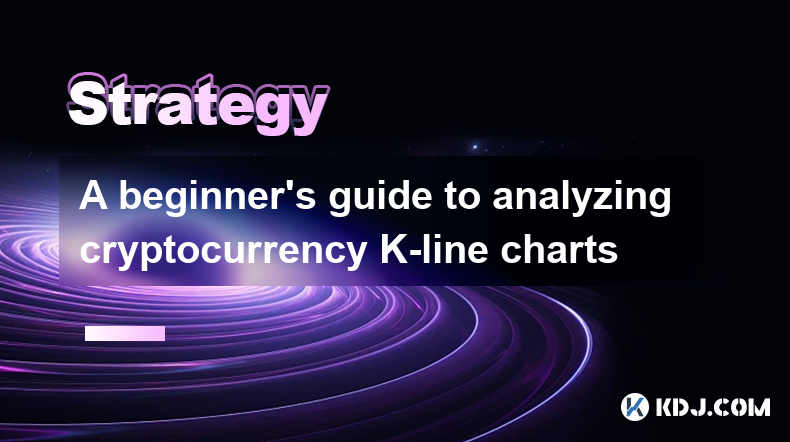
Understanding the Basics of K-Line Charts
K-line charts, also known as candlestick charts, are a fundamental tool for analyzing price movements in the cryptocurrency market. They visually represent price data over a specific period, providing insights into buying and selling pressure. Each candlestick represents a time period (e.g., 1 hour, 1 day, 1 week), showing the open, high, low, and closing prices. Understanding these four elements is crucial for interpreting the chart's narrative. The body of the candlestick shows the difference between the open and closing prices, while the wicks (shadows) represent the high and low prices during that period.
Deciphering Candlestick Patterns
Numerous candlestick patterns exist, each suggesting potential future price movements. Bullish patterns generally indicate upward price momentum, while bearish patterns suggest downward pressure. Recognizing these patterns requires practice and experience. Some common patterns include:
- Hammer: A small body with a long lower wick, suggesting a potential price reversal to the upside.
- Inverted Hammer: Similar to a hammer but with a long upper wick, indicating potential upward resistance.
- Engulfing Pattern: A large candlestick completely enveloping the previous one, signaling a potential trend reversal. A bullish engulfing pattern occurs when a green candlestick engulfs a red one, and vice versa for a bearish engulfing pattern.
- Doji: A candlestick with nearly equal open and closing prices, suggesting indecision in the market. This can be a sign of a potential trend reversal or continuation.
- Shooting Star: A long upper wick with a small real body, suggesting a potential top and a reversal to the downside.
Support and Resistance Levels
Identifying support and resistance levels is vital for effective K-line chart analysis. Support levels represent price points where buying pressure is strong enough to prevent further price declines. Resistance levels, conversely, represent price points where selling pressure is strong enough to prevent further price increases. These levels are often identified by horizontal lines drawn across previous price highs and lows. Breaks of these levels can signal significant price movements.
Moving Averages
Moving averages smooth out price fluctuations, making it easier to identify trends. Commonly used moving averages include the simple moving average (SMA) and the exponential moving average (EMA). The SMA calculates the average price over a specified period, while the EMA gives more weight to recent prices. Crossovers between different moving averages can generate buy or sell signals. For example, a "golden cross" (when the short-term MA crosses above the long-term MA) is often considered a bullish signal.
Relative Strength Index (RSI)
The RSI is a momentum indicator that measures the magnitude of recent price changes to evaluate overbought or oversold conditions. It ranges from 0 to 100. Readings above 70 are generally considered overbought, suggesting a potential price correction. Readings below 30 are generally considered oversold, suggesting a potential price rebound. However, it's crucial to remember that the RSI can remain in overbought or oversold territory for extended periods.
Volume Analysis
Volume analysis complements price action analysis. High volume confirms price movements, while low volume suggests weak price action. For example, a significant price increase accompanied by high volume is a stronger bullish signal than a similar increase with low volume. Conversely, a large price drop with low volume is less significant than one with high volume. Analyzing volume alongside candlestick patterns and price levels provides a more comprehensive picture.
Combining Indicators for Enhanced Analysis
Using multiple indicators together can provide a more robust analysis. For example, combining candlestick patterns with support/resistance levels and moving averages can help confirm potential trading signals. Remember that no single indicator is foolproof, and combining several indicators can reduce the risk of false signals. Always consider the broader market context and your risk tolerance before making any trading decisions.
Timeframe Selection
The timeframe you choose significantly impacts your analysis. Short-term charts (e.g., 1-hour, 4-hour) are useful for identifying short-term trading opportunities, while long-term charts (e.g., daily, weekly) are better for identifying major trends. Different timeframes can reveal different perspectives on the same asset, and it's beneficial to analyze multiple timeframes simultaneously for a holistic view.
Practice and Patience
Mastering K-line chart analysis requires time and dedication. Practice interpreting charts, experimenting with different indicators, and learning from your mistakes. Don't expect to become an expert overnight. Consistent practice and a willingness to learn are crucial for success. Remember that even experienced traders make mistakes, and risk management is paramount.
Frequently Asked Questions
Q: What are the key elements of a candlestick?
A: A candlestick displays the open, high, low, and closing prices for a specific time period. The body shows the difference between the open and close, while the wicks (shadows) represent the highs and lows.
Q: What are bullish and bearish candlestick patterns?
A: Bullish patterns suggest upward price momentum, while bearish patterns indicate downward pressure. Examples include hammers (bullish), inverted hammers (bearish), and engulfing patterns (both bullish and bearish depending on the color sequence).
Q: How do I identify support and resistance levels?
A: Support levels are price points where buying pressure prevents further price declines, while resistance levels are where selling pressure prevents further increases. These are often identified by horizontal lines drawn across previous price highs and lows.
Q: What are moving averages, and how are they used?
A: Moving averages smooth out price fluctuations, helping identify trends. Common types include the simple moving average (SMA) and the exponential moving average (EMA). Crossovers between different moving averages can generate buy/sell signals.
Q: What is the Relative Strength Index (RSI), and how is it interpreted?
A: The RSI is a momentum indicator measuring the magnitude of recent price changes. Readings above 70 are often considered overbought, while readings below 30 are considered oversold. However, it's not a foolproof indicator.
Q: How important is volume analysis in K-line chart interpretation?
A: Volume confirms price movements. High volume confirms a strong trend, while low volume suggests weak price action. Analyzing volume alongside price action provides a more complete picture.
Disclaimer:info@kdj.com
The information provided is not trading advice. kdj.com does not assume any responsibility for any investments made based on the information provided in this article. Cryptocurrencies are highly volatile and it is highly recommended that you invest with caution after thorough research!
If you believe that the content used on this website infringes your copyright, please contact us immediately (info@kdj.com) and we will delete it promptly.
- How XRPL Utility Can Support Token Price Growth
- 2025-04-04 05:35:12
- Long-dormant Bitcoin wallets have suddenly sprung to life
- 2025-04-04 05:35:12
- ExoraPad ($EXP), an innovative AI-powered launchpad exclusively developed for the XRP Ledger (XRPL), has reached an impressive milestone
- 2025-04-04 05:30:12
- XRP Price Surge Could Enable Early Retirement for Numerous Investors
- 2025-04-04 05:30:12
- XRP Price Prediction: Will XRP Bounce From This Support Or Continue Its Descent?
- 2025-04-04 05:25:12
- As US Treasury yields hit 6-month lows, Bitcoin (BTC) price may be poised for a breakout
- 2025-04-04 05:25:12
Related knowledge
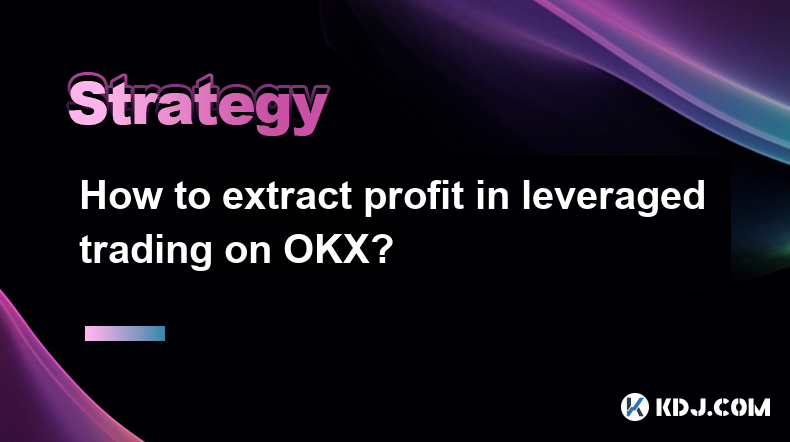
How to extract profit in leveraged trading on OKX?
Apr 04,2025 at 05:42am
Leveraged trading on OKX can be a powerful tool for traders looking to amplify their potential profits. However, it also comes with increased risk, making it essential to understand how to effectively extract profit from these trades. This article will guide you through the process of leveraging OKX's platform to maximize your gains while managing the i...

How to use the three crows candlestick combination to determine the market top?
Apr 03,2025 at 03:18pm
Three Black Crows are a classic K-line combination form that is often used to judge the top of the market in technical analysis. This pattern consists of three consecutive negative lines, the opening price of each negative line is within the entity of the previous K-line, and the closing price gradually decreases. This pattern usually appears at the end...
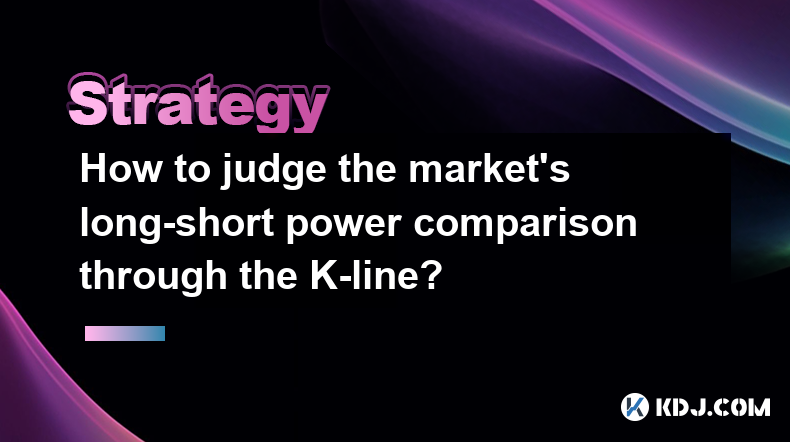
How to judge the market's long-short power comparison through the K-line?
Apr 03,2025 at 02:39pm
Judging the market's long-short power comparison through the K-line is an important skill in technical analysis. The K-line chart can not only show price changes, but also reflect the emotions and power comparison of market participants. This article will introduce in detail how to judge the market's long-short power comparison through K-lines. ...
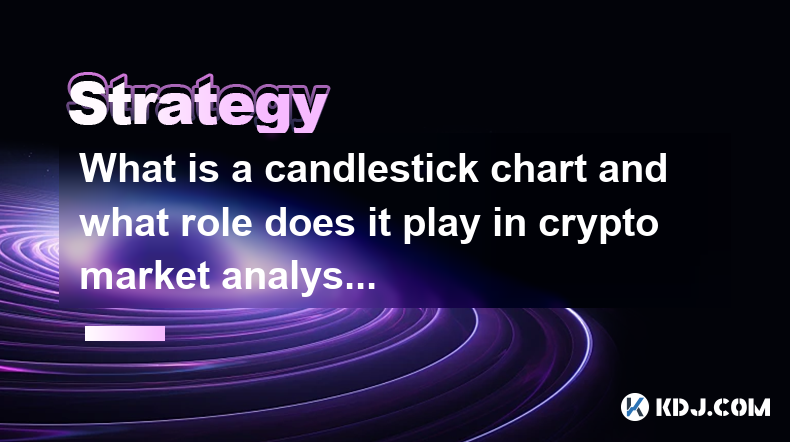
What is a candlestick chart and what role does it play in crypto market analysis?
Apr 03,2025 at 02:26pm
K-line chart, also known as candle chart, is a form of chart used to display changes in the price of financial products. In the cryptocurrency market, K-line charts are widely used to analyze the price trends of digital assets such as Bitcoin and Ethereum. This article will introduce in detail the basic structure, types of K-line charts and their specif...
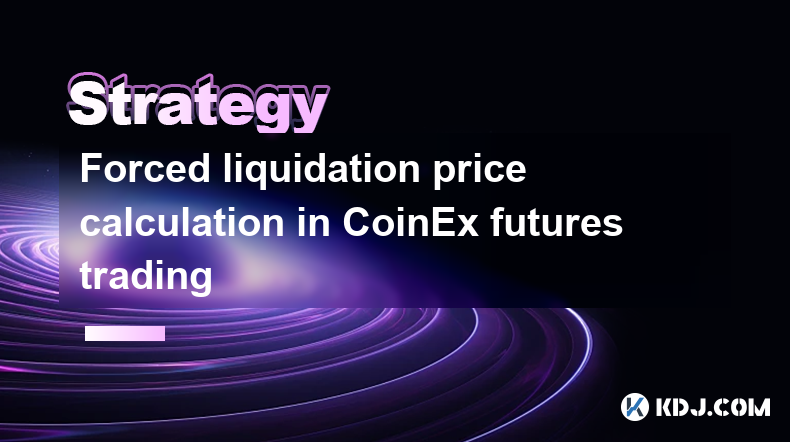
Forced liquidation price calculation in CoinEx futures trading
Apr 03,2025 at 05:35am
In CoinEx futures trading, understanding the forced liquidation price is crucial for managing risk and maintaining your positions. The forced liquidation price is the point at which your position is automatically closed to prevent further losses. This mechanism is designed to protect both the trader and the platform from negative account balances. The c...
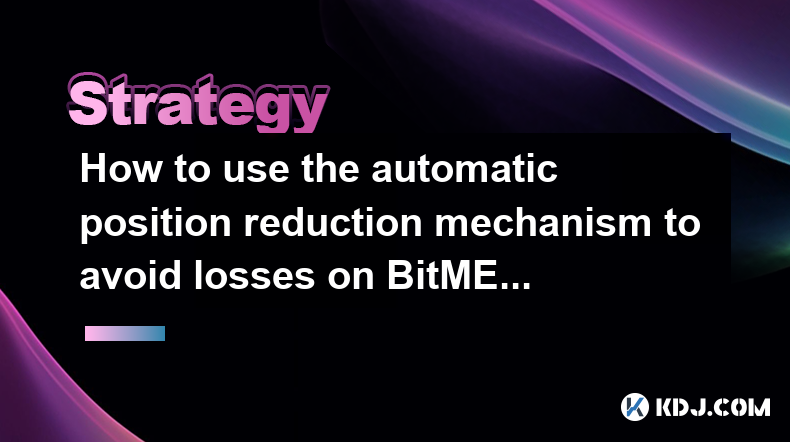
How to use the automatic position reduction mechanism to avoid losses on BitMEX
Apr 03,2025 at 02:56am
Using the automatic position reduction mechanism on BitMEX can be a strategic approach to managing risk and avoiding potential losses in the volatile cryptocurrency market. This feature, also known as Auto Deleveraging (ADL), is designed to help traders by automatically reducing their positions in certain conditions. To effectively use this mechanism, i...

How to extract profit in leveraged trading on OKX?
Apr 04,2025 at 05:42am
Leveraged trading on OKX can be a powerful tool for traders looking to amplify their potential profits. However, it also comes with increased risk, making it essential to understand how to effectively extract profit from these trades. This article will guide you through the process of leveraging OKX's platform to maximize your gains while managing the i...

How to use the three crows candlestick combination to determine the market top?
Apr 03,2025 at 03:18pm
Three Black Crows are a classic K-line combination form that is often used to judge the top of the market in technical analysis. This pattern consists of three consecutive negative lines, the opening price of each negative line is within the entity of the previous K-line, and the closing price gradually decreases. This pattern usually appears at the end...

How to judge the market's long-short power comparison through the K-line?
Apr 03,2025 at 02:39pm
Judging the market's long-short power comparison through the K-line is an important skill in technical analysis. The K-line chart can not only show price changes, but also reflect the emotions and power comparison of market participants. This article will introduce in detail how to judge the market's long-short power comparison through K-lines. ...

What is a candlestick chart and what role does it play in crypto market analysis?
Apr 03,2025 at 02:26pm
K-line chart, also known as candle chart, is a form of chart used to display changes in the price of financial products. In the cryptocurrency market, K-line charts are widely used to analyze the price trends of digital assets such as Bitcoin and Ethereum. This article will introduce in detail the basic structure, types of K-line charts and their specif...

Forced liquidation price calculation in CoinEx futures trading
Apr 03,2025 at 05:35am
In CoinEx futures trading, understanding the forced liquidation price is crucial for managing risk and maintaining your positions. The forced liquidation price is the point at which your position is automatically closed to prevent further losses. This mechanism is designed to protect both the trader and the platform from negative account balances. The c...

How to use the automatic position reduction mechanism to avoid losses on BitMEX
Apr 03,2025 at 02:56am
Using the automatic position reduction mechanism on BitMEX can be a strategic approach to managing risk and avoiding potential losses in the volatile cryptocurrency market. This feature, also known as Auto Deleveraging (ADL), is designed to help traders by automatically reducing their positions in certain conditions. To effectively use this mechanism, i...
See all articles






















































































